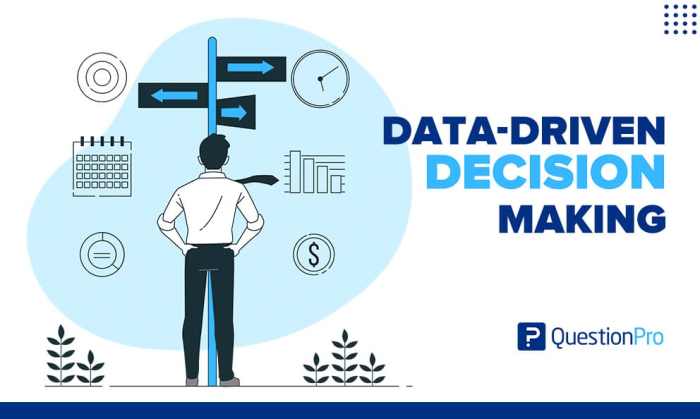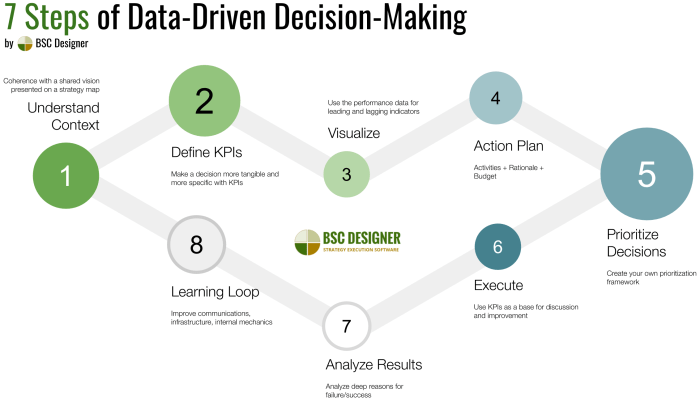Using Customer Data to Drive Decisions takes center stage, inviting readers into a world where data rules and smart decisions prevail. Get ready to dive into the realm of customer data like a boss!
Let’s break down the different types of customer data, how to collect them, analyze the insights, and implement decisions that drive success. It’s time to harness the power of data-driven decision-making!
Importance of Customer Data
Customer data is the lifeblood of any business in today’s digital age. By collecting and analyzing customer data, companies gain valuable insights that can drive strategic decision-making and improve overall performance.
Enhancing Customer Experience
Customer data allows businesses to personalize their interactions with customers, leading to improved satisfaction and loyalty. For example, by tracking purchase history and browsing behavior, companies can recommend products or services tailored to individual preferences, creating a more personalized shopping experience.
Targeted Marketing Campaigns
Utilizing customer data enables businesses to target specific customer segments with relevant marketing messages. By analyzing demographic information, past purchases, and engagement metrics, companies can create targeted campaigns that are more likely to resonate with their audience and drive conversions.
Predictive Analytics
Customer data can also be used to predict future trends and behaviors, allowing businesses to anticipate customer needs and preferences. By analyzing patterns and correlations in the data, companies can make informed decisions on product development, pricing strategies, and marketing initiatives.
Improving Operational Efficiency
By leveraging customer data, businesses can streamline operations and optimize processes. For example, analyzing customer feedback and support interactions can highlight areas for improvement in customer service, leading to more efficient and effective customer support.
Driving Business Growth
Overall, the effective use of customer data can drive business growth by enhancing customer relationships, increasing sales, and improving overall performance. By prioritizing data-driven decision-making, companies can stay ahead of the competition and adapt to changing market conditions more effectively.
Types of Customer Data

Customer data comes in various forms and can provide valuable insights for businesses looking to make informed decisions. Let’s take a closer look at the different types of customer data and their significance in driving business strategies.
Demographic Data
Demographic data includes information such as age, gender, income level, education, and location. This type of data is crucial for understanding the characteristics of your target audience and tailoring marketing strategies to meet their specific needs. For example, a company selling skincare products might use demographic data to create targeted ads for different age groups.
Purchase History Data
Purchase history data tracks the buying behavior of customers, including items purchased, frequency of purchases, and average order value. This data can help businesses identify popular products, predict future trends, and personalize recommendations for individual customers. For instance, an online retailer can use purchase history data to send personalized product recommendations based on past purchases.
Engagement Data
Engagement data measures how customers interact with your brand, such as website visits, social media interactions, email opens, and click-through rates. By analyzing engagement data, businesses can gauge customer interest, improve communication strategies, and enhance customer experience. For example, a company can track email open rates to determine the effectiveness of their email marketing campaigns.
Feedback and Reviews
Feedback and reviews provide valuable insights into customer satisfaction, preferences, and areas for improvement. Businesses can use this data to identify customer pain points, make product enhancements, and address any issues promptly. For instance, a restaurant can leverage customer reviews to improve service quality and menu offerings.
Behavioral Data, Using Customer Data to Drive Decisions
Behavioral data captures how customers interact with your products or services, including browsing patterns, cart abandonment rates, and time spent on a website. This data helps businesses understand customer intent, optimize user experience, and improve conversion rates. For example, an e-commerce store can analyze behavioral data to streamline the checkout process and reduce cart abandonment.
Collecting Customer Data
When it comes to collecting customer data, there are various methods that businesses can utilize to gather valuable information about their customers. From online surveys to tracking website analytics, each method offers unique insights that can help drive strategic decisions and improve customer experiences.
Methods for Collecting Customer Data
- Online Surveys: Sending out surveys via email or social media can help gather feedback directly from customers on their preferences and experiences.
- Website Analytics: Tracking user behavior on your website can provide valuable insights into customer preferences, browsing habits, and areas for improvement.
- Customer Feedback Forms: Providing customers with a way to submit feedback, whether online or in-store, can offer valuable insights into their satisfaction levels and areas for improvement.
- Social Media Monitoring: Keeping an eye on social media platforms can help businesses understand customer sentiment, preferences, and trends.
Importance of Data Privacy and Security
Ensuring data privacy and security is crucial when collecting customer data. Customers trust businesses with their personal information, and it is essential to protect that data from unauthorized access or misuse. Implementing robust security measures and following data protection regulations can help build trust with customers and maintain the integrity of the data collected.
Best Practices for Collecting Customer Data
- Be Transparent: Clearly communicate to customers why you are collecting their data and how it will be used.
- Obtain Consent: Always seek permission from customers before collecting their data, especially sensitive information.
- Keep Data Accurate: Regularly update and clean customer databases to ensure the data collected is accurate and relevant.
- Limit Data Collection: Collect only the data that is necessary for your business objectives to minimize the risk of data breaches.
Analyzing Customer Data

Analyzing customer data is crucial for businesses to make informed decisions and improve their overall strategy. By examining the information gathered from various sources, companies can gain valuable insights into their customers’ behavior, preferences, and needs.
Role of Data Analytics Tools
Using data analytics tools is essential for businesses to effectively analyze customer data. These tools help companies process large volumes of data quickly and accurately, allowing them to identify patterns, trends, and correlations that may not be apparent at first glance. By leveraging these tools, businesses can make data-driven decisions that lead to improved customer satisfaction and increased profitability.
- Data visualization tools such as Tableau or Power BI can help businesses create interactive dashboards and reports to present customer data in a clear and engaging way.
- Predictive analytics tools like IBM Watson or Google Analytics can forecast future trends based on historical data, enabling businesses to proactively address customer needs and preferences.
- Machine learning algorithms can analyze customer data to segment customers into different groups based on their behavior, allowing businesses to personalize marketing strategies and improve customer retention.
Examples of Insights from Analyzing Customer Data
- Identifying high-value customers who generate the most revenue for the business, allowing companies to tailor special offers or incentives to retain their loyalty.
- Discovering patterns in customer purchasing behavior to optimize product recommendations and increase cross-selling opportunities.
- Segmenting customers based on demographics, psychographics, or buying habits to create targeted marketing campaigns that resonate with specific customer groups.
Implementing Decisions Based on Customer Data: Using Customer Data To Drive Decisions
Implementing decisions based on customer data is a crucial step for businesses looking to enhance their strategies and improve customer satisfaction. By leveraging insights gathered from customer data, companies can make informed choices that drive success and growth.
Aligning Strategies with Customer Data Insights
- Businesses can align their marketing strategies with customer data by identifying trends and patterns in customer behavior. For example, if data shows that a particular demographic prefers online shopping, businesses can focus their marketing efforts on digital platforms.
- Personalizing customer experiences based on data insights can also help businesses build stronger relationships with their customers. By tailoring products or services to meet specific customer needs, companies can increase customer loyalty and retention.
- Utilizing customer feedback data to improve products or services is another effective way to implement decisions based on customer data. By analyzing feedback from surveys or reviews, businesses can make adjustments that align with customer preferences and expectations.
Successful Decision-Making Examples
-
Amazon’s recommendation system is a prime example of successful decision-making based on customer data. By analyzing customer behavior and purchase history, Amazon is able to suggest personalized product recommendations, leading to increased sales and customer satisfaction.
-
Netflix uses customer data to determine content preferences and recommend TV shows and movies to users. By leveraging data insights, Netflix delivers a personalized viewing experience that keeps customers engaged and loyal to the platform.
-
Starbucks implemented a mobile app based on customer data that allows users to order ahead, customize drinks, and earn rewards. This decision was driven by customer data indicating a demand for convenience and personalization, resulting in increased customer engagement and loyalty.
